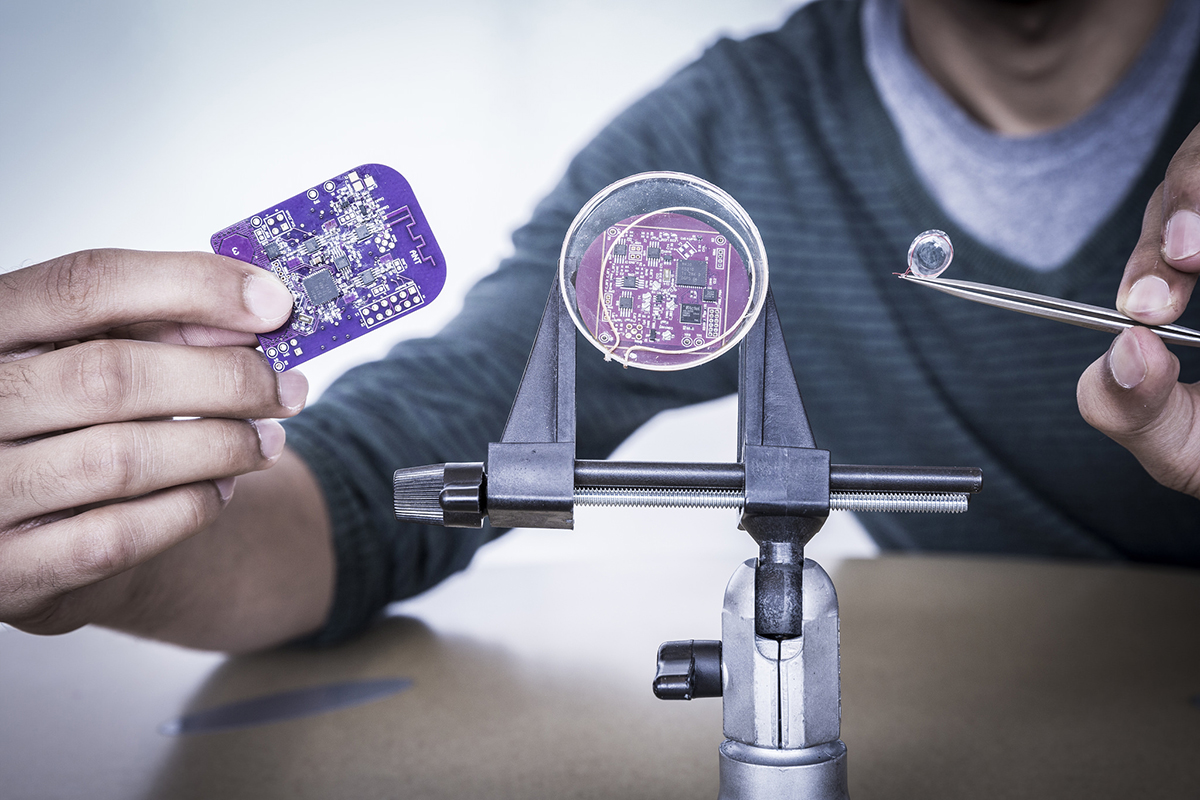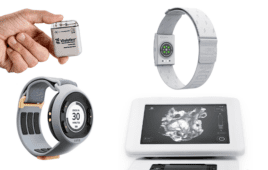
The energy savings from interscatter communication allows power-limited devices such as smart credit cards (left), implanted medical devices (middle) and smart contact lenses (right) to achieve Internet connectivity. (Credit: Mark Stone/University of Washington)
Engineers at the University of Washington have created a way of communicating that lets devices like brain implants and contact lenses talk to everyday items like smartphones and watches.
They are calling this method “interscatter communication,” based on a technique called backscatter that allows devices to exchange information simply by reflecting existing signals. The term “interscatter” comes from the fact this technique allows inter-technology communication by using Bluetooth signals to transmit Wi-Fi.
Interscatter communication used the Bluetooth, Wi-Fi or ZigBee radios embedded in mobile devices like smartphones, watches, laptops, tablets and headsets to serve as both sources and receivers for these reflected signals.
Using these reflections, an interscatter device, like a smart contact lens, converts Bluetooth signals from a device like a smartwatch into Wi-Fi transmissions that can be picked up by a smartphone.
“Wireless connectivity for implanted devices can transform how we manage chronic diseases,” said Vikram Iyer, a UW electrical engineering doctoral student. “For example, a contact lens could monitor a diabetics blood sugar level in tears and send notifications to the phone when the blood sugar level goes down.”
Due to size and location within the body, devices like contact lenses are too constrained by power demands to send data using conventional wireless transmissions. Those same requirements also limit emerging technologies such as brain implants that treat Parkinson’s disease, stimulate organs, and may one day even reanimate limbs.
The researchers built three proof-of-concept demonstrations for previous infeasible applications, such as a smart contact lens and an implantable neural recording device that communications directly with smartphones and watches.
“Preserving battery life is very important in implanted medical devices, since replacing the battery in a pacemaker or brain stimulator requires surgery and puts patients at potential risk from those complications,” said Joshua Smith, associate professor of electrical engineering and of computer science and engineering. “Interscatter can enable Wi-Fi for these implanted devices while consuming only tens of microwatts of power.”




